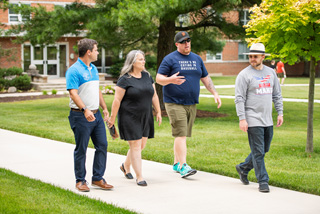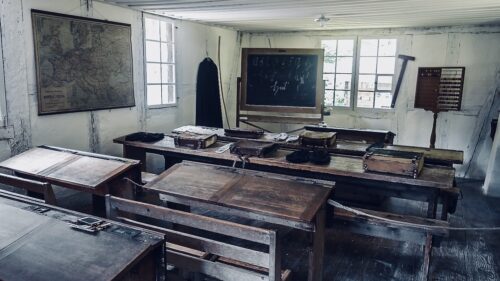
Teaching What Self-Government Requires
Many students enter high school government classes knowing very little about the way the American constitutional system really works. If given only a textbook account of American government, they leave the course still unaware of what self-government requires. What happens when teachers ask students to read the primary documents of our founding carefully, constructing their own account of our system? Lightbulbs suddenly turn on above their heads, teachers who’ve studied in TAH programs tell us. They realize our Constitution is not self-enforcing. Citizens must understand and support it.
This summer we asked five teachers attending the residential program of the Master of Arts in American History and Government (MAHG) how they convey to students what self-government requires. All of these teachers were drawn to MAHG by its focus on primary documents, and most began teaching more consistently from primary documents after beginning the program.
How Fragile is This System?
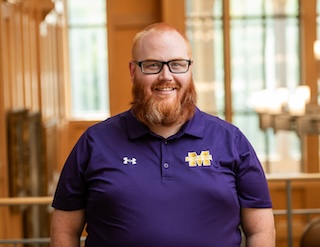
Casey Enright, who teaches at Mesa High School in Arizona, recalled a lesson he’d taught on the separation of powers. Students worked in small groups as they combed through Articles I, II, and III of the Constitution, trying to answer the questions: What provisions keep the three branches of government separate? Are these provisions adequate? A young woman raised her head from the text, looking with surprise at the other members of her group. “I didn’t realize how fragile this system is!” she said.
“This led to a really interesting conversation,” Enright recalled. Gradually, students realized that the written Constitution needs institutional support. “It takes people doing what they are supposed to do, working within the confines of the Constitution, to preserve our system of government. Many countries with great written constitutions have fallen into autocracy. I told the kids that they needed to hold officials accountable, and to act themselves so as to uphold the Constitution, not to erode it.”
Learning What the Constitution Says
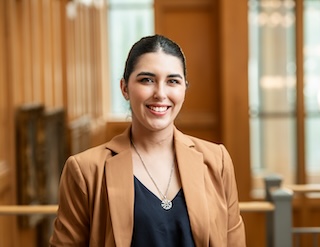
In the words of Amy Vara Robertson of Aventura, Florida, what self-government requires is an accurate understanding of what the Constitution says. Robertson teaches her government courses entirely from primary documents. When her students begin reading the Constitution, Robertson hands them a list of 250 questions about our Constitutional system. “They have to read the Constitution line by line to find each answer.” As they work, they repeatedly express surprise.
“My students have assumed the Constitution says that the President can do whatever he wants—that he can make laws unilaterally. They’ve assumed that there’s an age limit for the justices, or that the justices have to have a law degree. When they say these things, I say, ‘Well, find it in the Constitution.’ In both my regular level government and AP Government classes, students react with surprise to what they find.”
An Understanding of Human Nature
Bryan Little of McPherson, Kansas noted that teaching government through primary documents helps students see our constitutional framework as a design based on an understanding of human nature. “I keep my whole stack of MAHG class binders on my classroom desk,” Little explained. “When the kids ask a question, I say, ‘Do you want the textbook answer? Or do you want the real answer?’”
Little tells students that he can point them in either of two directions. The textbook will offer a simplified description of the Constitutional provision itself. But within his MAHG binders, Little can find documents written by the Constitution’s framers. These documents explain the framers’ thinking. If a student wants the “real” answer—and almost all students do—Little reads from the framers’ own words. Then he pushes the student to think through the framer’s logic. “Does this author, in your view, actually understand typical human behavior?”
For example, a student’s question might prompt Little to read from Federalist 51. Here, Madison explains that in order to maintain a separation between the legislative, executive, and judicial powers of government, those who administer each branch must be given incentives for resisting “encroachments of the others”:
Ambition must be made to counteract ambition. The interest of the man must be connected with the constitutional rights of the place. It may be a reflection on human nature, that such devices should be necessary to control the abuses of government. But what is government itself, but the greatest of all reflections on human nature?. . . If angels were to govern men, neither external nor internal controls on government would be necessary.
Little asks his students whether Madison describes human nature accurately. Few of them have thought about the human tendency toward self-serving behavior. If Madison is right, did the Constitution’s framers devise adequate measures to guard the independence of each branch of government? “That’s not something I would have thought to ask students before MAHG,” Little says. The question leads students to a crucial realization. When assessing a theory of government, you may make inferences based on experience, but you will not find exact answers. “I work on the same hall as the math classes. My students ask, ‘Well, what’s the right answer?’ I tell them it’s a matter for interpretation. Right answers are across the hall.”
Citizen Action Toward a More Perfect Union
But if there are no certain answers in civic life, students wonder, how can they participate in it? Enright responds by quoting the Constitution’s preamble, in which the founders say they hope to achieve “a more perfect union.” He explains that “any legislative solution we find to address the problem we have right now may no longer seem a great solution ten years from now. But at that point, we can revise it. That’s why it’s important to keep progressing as a society—and why it’s important that students see themselves as potential change-makers. Students think that government leaders are on a different plane from them. More often, they are ordinary people who just have had enough” of the problem they act to solve. “We need to form citizens willing to go out and bring about the change they want to see,” Enright said.
“They need to support the stability of our constitutional system without feeling like everything is locked in concrete,” Little added.
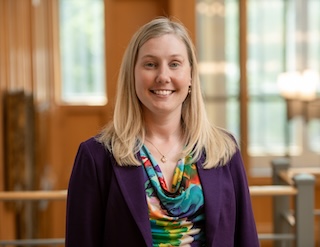
“It’s becoming increasingly difficult to say with a straight face to students that their vote counts and their voice matters,” interjected Ashley Vascik, who teaches at Boonsboro High School in western Maryland.
Little agreed. “Students today feel disenfranchised by institutions and processes and distant, old politicians. They’re also nervous about the elevated tension in the public sphere.”
Vascik continued, “They need to know that their voices do count. But just teaching what’s in the textbook is not going to convince them. Through primary documents, students get a better understanding of how far we’ve come and where we still have to go. Then they can be convinced to participate.”
Encouraging Confidence in Our System
But teachers can do more to reinforce the lessons primary documents teach, the group told us. Little said, “My students volunteer at the polls,” learning how votes are carefully counted. “You need more than strong feelings—you need institutional knowledge to engage in civic life effectively.”
Robertson teaches in a charter school serving many immigrant students “who came here because their parents have hope for America. I can’t squander that hope,” she said. “I don’t say, ‘Your vote might not matter’; I say, ‘your vote matters the most!’ I tell students that historically, citizens between the ages of 18 and 29 have voted less often than older citizens. ‘If you don’t like what’s going on, make a change when you go to vote in November!’” she exhorts.
Allison Collier teaches the children of hi-tech workers at the FedEx technology center in Collierville, Tennessee. Many are South Asian immigrants. Collier said she views herself “as my students’ ‘republican mother,’” using the phrase applied to early American women who educated their children in the habits and dispositions self-governing citizens need. “Eighty percent of my APUSH students’ parents were not born in this country. They don’t learn at home the stories of the Revolution and Founding. They don’t imbibe a reverence” for American institutions.
“So, it falls on my shoulders to cultivate those values. . . . Lincoln said it at Gettysburg: it’s our responsibility to teach and preserve the principle of human equality. And Jane Addams”—who spent her career among the immigrants working industrial jobs in Chicago—”said in ‘The Subjective Necessity for Social Settlements‘ that the good you secure for yourself is not secure until you secure it for the people around you.”
Teachers can help students rise above the behavior they too often see in elected officials, Vascik added. “I preach the importance of civil discourse. It’s not just about speaking to others; It’s about listening to them. . . . It takes great strength to say, ‘I see you and I hear you and I respect your position.’”
Building students’ confidence in our constitutional system is the teacher’s job. That requires bringing a high level of “energy” to the classroom,” Robertson and Vascik noted. A political system dedicated to liberty and equality, Little added, “doesn’t mean anything unless we all believe it does. Our country began because normal people came together and said, ‘Let’s go do this thing.’” “Ordinary people like us,” Enright said.
